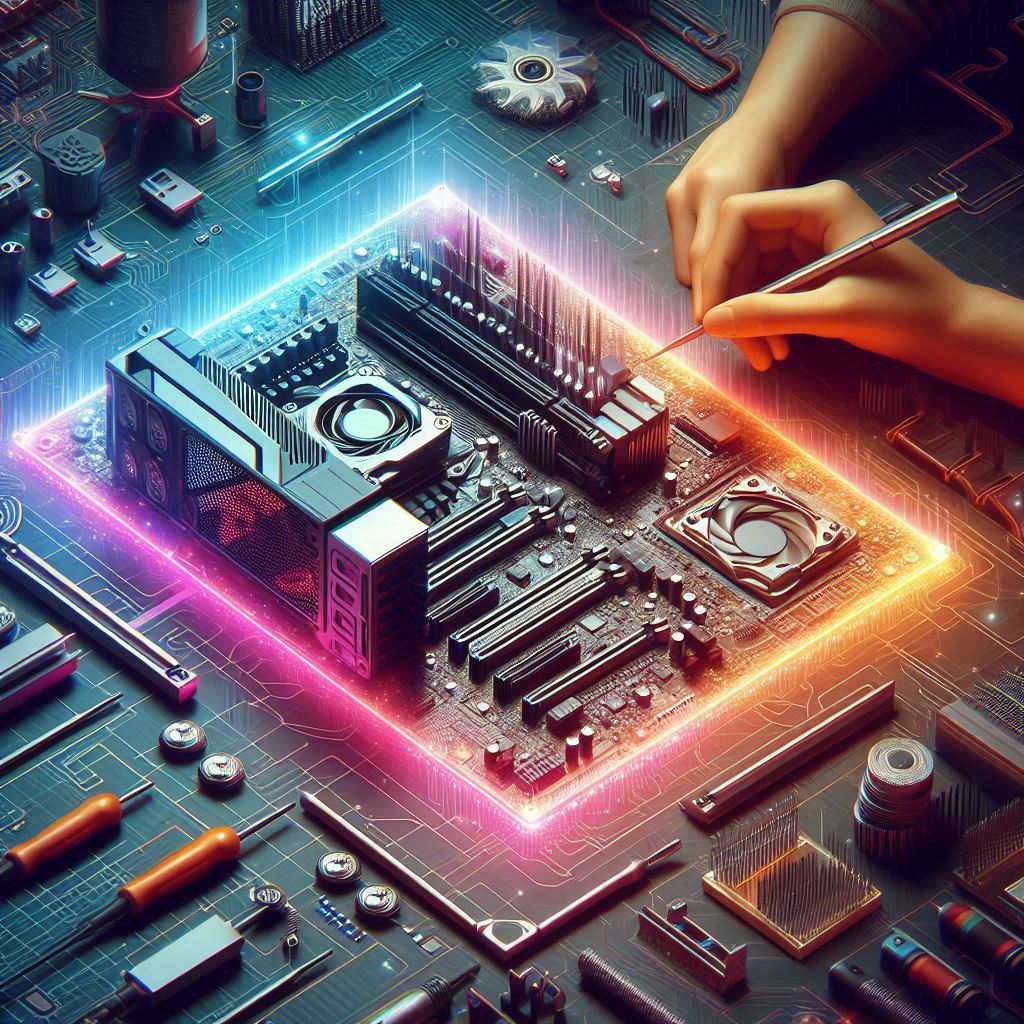Introduction
Building your own gaming PC can be one of the most rewarding—and cost-effective—ways to get the performance you want without overpaying for prebuilt systems. In 2024, the PC component market offers a wide range of budget-friendly options that deliver solid 1080p (and even 1440p) gaming performance. This step-by-step guide will walk you through everything from setting your budget to picking compatible parts, assembling your components, and getting your system up and running with minimal headache.
Why Build a Budget Gaming PC?
- Cost Savings: By choosing components à la carte, you avoid the markup that prebuilt manufacturers often add.
- Customization: You get exactly the features you want—more RAM, a larger SSD, a quiet cooler—without paying for extras you don’t need.
- Upgrade Path: When you build your own PC, it’s easy to swap out parts over time, extending the lifespan of your investment.
- Learning Experience: You’ll gain hands-on knowledge of how PCs work, which makes troubleshooting and future upgrades far simpler.
Planning Your Budget
Define Your Target Performance
Decide whether you primarily want solid 1080p at high settings, entry-level 1440p, or esports-style ultra-high frame rates.
Allocate Funds
A balanced budget build in 2024 usually costs between €600–€900 (or $650–$1,000 USD). A typical allocation might be:
- CPU + Motherboard: 30%
- GPU: 35%
- RAM: 10%
- Storage: 10%
- Case + Cooling: 5%
- Power Supply: 10%
Prioritize the GPU and CPU
Gaming is GPU-bound, but pairing a solid budget CPU prevents bottlenecks.
Choosing Your Components
CPU
- AMD Ryzen 5 5600 or 5600G
6 cores / 12 threads, strong gaming performance, often bundled at discounts. - Intel Core i5-12400F
6 cores / 12 threads, excellent value on a budget motherboard.
GPU
- NVIDIA GeForce RTX 3050
Good 1080p ray-tracing on a budget. - AMD Radeon RX 6600
Often slightly cheaper, solid 1080p and entry-level 1440p.
Motherboard
- B550 (for Ryzen) or B660 (for Intel) chipset
Look for at least two M.2 slots, USB 3.2 Gen 2, and quality VRMs for stability.
RAM
- 16 GB (2×8 GB) DDR4-3200
Dual-channel for best gaming performance. - DDR4-3600 for Ryzen CPUs if budget allows.
Storage
- NVMe SSD, 500 GB–1 TB
PCIe 3.0 drives like the Crucial P3 or WD Blue SN550 offer excellent price/performance. - Optionally pair with a 2.5″ SATA SSD for bulk storage.
Power Supply (PSU)
- 550 W–650 W, 80 Plus Bronze
Brands: Corsair CX series, Seasonic S12III, EVGA 500 W. - Ensure it has the necessary PCIe connectors for your GPU.
Case
- Budget mid-tower case with good airflow (e.g., Cooler Master MasterBox, NZXT H510).
- At least two preinstalled fans and support for front-mounted fans or a mesh front panel.
Cooling
- Stock coolers that come with Ryzen or Intel CPUs are typically sufficient on a tight budget.
- Aftermarket air coolers (~€25–€35) like the Cooler Master Hyper 212 can provide quieter operation.
Peripherals & Extras
- Optional: Case fans, RGB lighting, cable extensions—nice to have but not essential.
- OS: Windows 10/11 license or choose a free Linux distribution (e.g., Ubuntu, Pop!_OS).
Tools You’ll Need
- Phillips-head screwdriver (magnetic tip preferred)
- Antistatic wrist strap or mat (optional but recommended)
- Small zip ties or Velcro straps for cable management
- Flash drive (for BIOS update and OS installation)
Step-by-Step Assembly
Prepare Your Workspace
Clear, flat surface; good lighting; minimize dust. Ground yourself to avoid static discharge.
Install the CPU
Lift the socket lever, align the CPU’s triangle marker, drop it in gently, and lower the lever.
Mount the CPU Cooler
Apply a pea-sized drop of thermal paste (if not pre-applied), align the cooler, and secure per manufacturer instructions.
Install RAM
Open DIMM clips, align the notch, press firmly until clips click.
Attach the Motherboard to the Case
Install standoffs; align I/O shield; carefully lower the board onto standoffs; secure with screws.
Install Storage
For M.2: unscrew the standoff, insert the drive at 30°, screw down.
For SATA SSD/HDD: mount in drive bays, connect SATA power and data cables.
Install Power Supply
Secure PSU in its compartment; route cables toward motherboard area.
Install GPU
Remove the PCIe slot covers; align GPU in PCIe x16 slot; secure with screws; connect PCIe power cables.
Connect Front-Panel & Case Fans
Refer to motherboard manual for USB, audio, power switch, reset switch connectors.
Cable Management
Route cables behind the motherboard tray; use zip ties to keep them tidy and airflow clear.
First Boot & BIOS Setup
Power On
Verify fans spin; look for motherboard POST code or single beep.
Enter BIOS/UEFI
Press Del or F2 during boot.
Configure Settings
Enable XMP/DOCP profile for RAM. Ensure storage is recognized. Set boot order to your USB installer first.
Save & Exit
Save changes and reboot.
Operating System & Drivers
Install OS
Boot from USB flash drive; follow on-screen prompts for Windows or Linux.
Driver Installation
Install chipset drivers (AMD/Intel), GPU drivers (NVIDIA/AMD), and motherboard LAN/Wi-Fi drivers if needed.
Windows Updates
Let Windows Update fetch the latest patches and driver updates.
Benchmarking & Tweaking
- Benchmark Tools: 3DMark Time Spy, Unigine Superposition for GPU; Cinebench R23 for CPU.
- In-Game Benchmarks: Use built-in benchmarks in games like Shadow of the Tomb Raider, Metro Exodus.
- Monitor Temps & Clocks: HWMonitor, MSI Afterburner.
- Basic Tweaks: Adjust fan curves in BIOS or via software; undervolting GPU/CPU can reduce temps while maintaining performance.
Tips for Future Upgrades
- GPU: Swap in a higher-tier card (e.g., RTX 3060, RX 6700 XT) when prices drop.
- Storage: Add a high-capacity HDD for mass storage or a second NVMe drive.
- RAM: Upgrade to 32 GB if you start streaming or running memory-intensive tasks.
- CPU: On AM4, install a higher-end Ryzen 5000-series CPU; on LGA 1700, upgrade to a 12th/13th Gen Intel CPU.
Conclusion
Building a budget gaming PC in 2024 is entirely achievable with careful component selection, a modest budget, and a little patience. By prioritizing the GPU and CPU, choosing a feature-rich yet affordable motherboard, and following this step-by-step assembly guide, you can enjoy high-quality gaming without breaking the bank. Happy building—and happy gaming!

